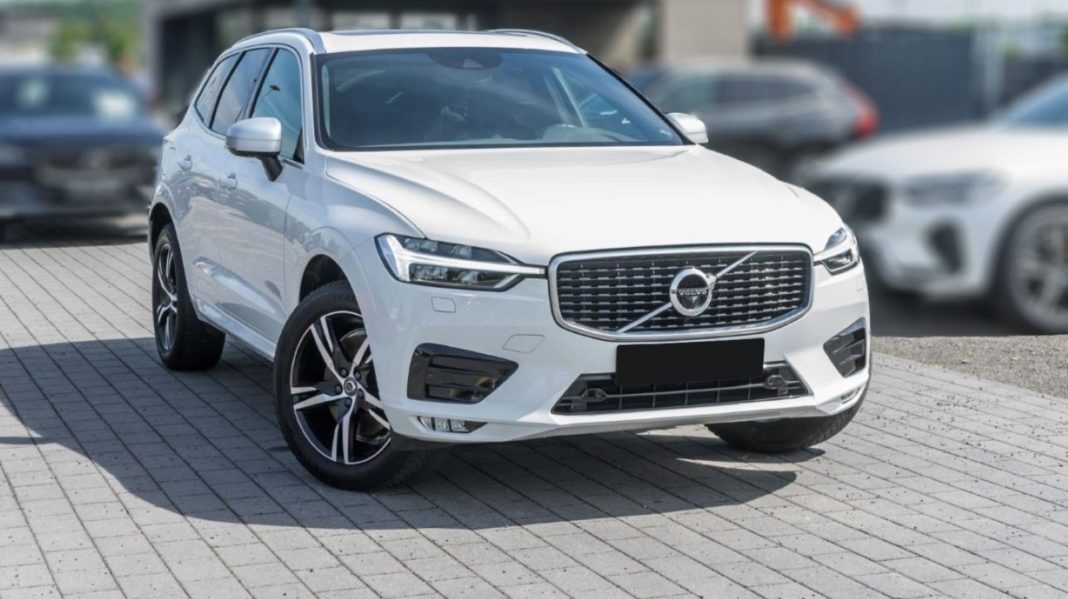On SUVs you can find 2 rear door designs:
- the door is not part of the rear fender
- the door is part of the rear fender
The simplest design is when the door is not part of the rear fender, since the “fender part of door design” requires some additional protection. But what happens if there is no protection? Stone chips, dirt, and rust in the future – that’s what. On the lower pictures you can see perfect examples what happens if the door sides are not protected.

On the upper examples of a 1st gen Audi Q7 and 1st gen VW Touareg you can see the result of years and years of using the car on winter salty roads. Stone chips, road salt, and dirt did its job pretty well. Interestingly, the 2nd gen VW Touareg and the 2nd gen Audi Q7 have the rear doors designed the classic way, so the doors are no longer part of the rear fender. This means, that the engineers at these brands realized this issue and they were able to eliminate it for good on the newer models (pretty awesome right??).
But for some reason the Volvo engineers intentionally or unintentionally did a poor job designing the doors on the 2nd gen Volvo XC60. This car is made from 2017 so it’s still a pretty new car which doesn’t have much common / well-known issues yet. But I can already tell, that one of the first issues of this car is gonna be the damaged paint and rust in the future on the rear door edge – on cars used on winter salty roads.
I owned a 1st gen VW Touareg and also a 1st gen Audi Q7 and while they also have a similarly flawed rear door design as this 2nd gen Volvo XC60, I have to mention that the dirt accumulation on the Volvo is on a much MUCH bigger scale than on the previously mentioned cars. This is, I guess mostly the result of the position of the rear wheels – they are positioned more towards outside, which is great for the design and maybe even better for the handling, but it’s obviously not good in terms of practicality, since the shit from the road is literally shooting very effectively towards the rear door edge.
Protect those damn doors
As you can see on the video, even a very low mileage car can have nice rock damage on the rear doors so it’s important to protect these places! There are basically 3 options how to protect the rear doors:
- buy the genuine Volvo plastic mud flaps
- buy the Chinese plastic mud flaps
- put some paint protection film onto the rear door edges
If you have seen the video, then you know that the problem is also with the rear fender seal which can catch some of the dirt and road salt from the road. So this place is another potential future rust spreading point ! So keep this in mind, and if you are using the car on winter salty roads and you want to keep it for a longer time – then you should definitely do something about this design flaw. I guess its better to act early than too late? or something like that.
Are there any other issues guv’nor ?
The front grille also has a not very practical design. While it looks great, the space between the narrow parts of the grille is just too wide, which means that the rocks from the road and even the bigger bugs can more easily hit and damage the radiator. Sadly, there is no official genuine solution for this, but some creative owners have put a metallic mesh behind the grille. I have to add that these cars are available with a couple of different front grille designs. So some types are maybe not that vulnerable to letting the trash trough, + the diesel engine cars and maybe even the hybrid versions have active air flaps behind the grille which if closed are obviously not letting in anything.
These cars are still pretty new, so I can’t tell you anything about the possible issues or reliability in general. But:
- cases of occasional software issues-mostly related to the multimedia system can occur – as in any other newer car
- cases of occasional squealing noises from the front brakes can occur as well
- and make sure all the recalls were done – as in any other newer car
Let’s be honest, the already mentioned design flaws are not major issues. Yes, they shouldn’t be there, but there is nothing like a perfect car and if you think that the Audi Q5, the BMW X3 or God forbid – one of those Jaguar SUVs or something similar are much better and flawless cars, then you are just completely wrong and I don’t have anything more to say.
This car does have many positives too like the:
- very nice interior
- great optional air suspension
- great safety
- many interesting technologies
- awesome design
- and so on
Plus, from my early look, to me it seems like this XC60 is more service/maintenance friendly than the Audi Q5 or BMW X3 for example. In other words I can already tell that replacing numerous things are gonna be easier on it than on the already mentioned rivals.
However, I’m not saying that the Volvo is better or that it’s gonna be more reliable than the Q5 or X3 for example.
If you would ask me:
“many things are just made or built better on the Volvo, in other words certain technical solutions are those more expensive type of solutions than on the rivals-which have certain cheaper tech solution, plus there are certain parts on the Volvo which are from more expensive suppliers – which means, that they should withstand a longer time than the certain parts on the rivals. But again, I’m not saying that the Volvo is better or that it’s gonna be more reliable than the Q5 or X3 ! “
Long story short, I don’t discourage you from buying this car, but I’m also not saying that you should buy it immediately since nobody is paying me to promote it.
Haldex type 4wd
Lastly, if you have this car with the haldex type 4wd system then don’t forget to replace the oil in the rear differential clutch preferably every 30 000 or 40 000 km to extend the lifetime of the pump. + keep in mind that you should also remove the pump to check/ eventually clean the tiny mesh on it.
Because of the accumulated dirt and lack of proper oil flow you can end up with a damaged pump in the future !














